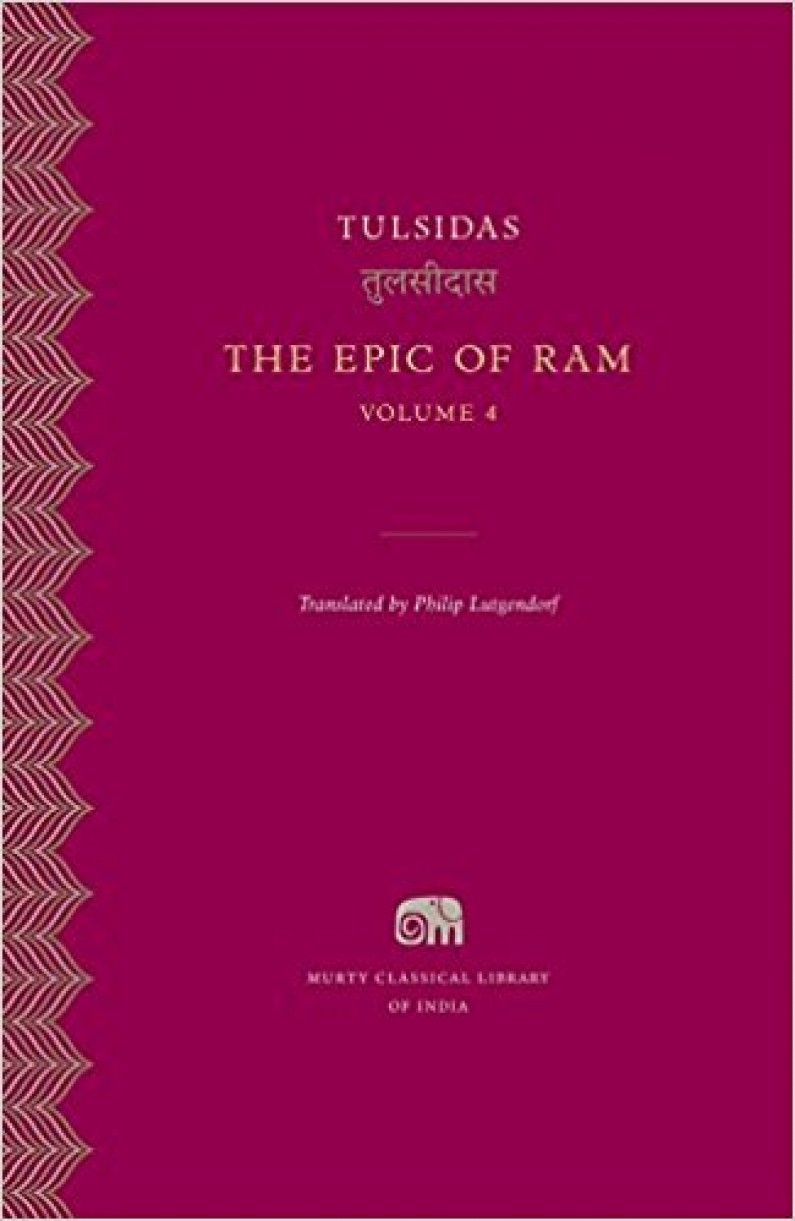Retranslating the Ramayana

Here at the Iowa Translation Workshop, our 50th anniversary year continues with a spring colloquium series for which Philip Lutgendorf, professor of Hindi and Modern Indian Studies at the university, gave us the lowdown on his current project, a retranslation of the Sanskrit epic poem the Ramayana (that’s ruh-MY-uh-nuh, not ra-ma-YA-nuh, as I’ve sometimes heard it pronounced). The earliest version of the poem is attributed to the “primordial poet” Valmiki in the 5th to 4th century BCE, but Lutgendorf has been translating a late 16th-century version attributed to the Brahman Tulsidas, who wrote in a Hindi further from Modern Standard than, say, Shakespeare’s English is from today’s, but that most Hindi speakers now could read without a gloss, so, closer than Chaucer’s language for us.
A cross in looks between a young Keith Richards and Mr. Spock (RIP Leonard Nimoy), Lutgendorf related how he took up translating the Ramayana upon the death of his mentor from the University of Chicago, whom he considered “the quintessential translator.” No sooner had he begun experimenting with a few stanzas than a colleague commissioned an extended section for the Norton Critical Edition. But that was fully ten years before editor Sheldon Pollock approached Lutgendorf about translating a complete Tulsidas Ramayana for the Murty Classical Library, founded in 2015 by Harvard University Press with the aim of making classical Indian literature available in India at affordable prices.
Going into the project, Lutgendorf made it clear to his editors that his interest hinged on the freedom to produce a free-verse translation, where prior translations had indulged in a turgid prose he finds antithetical to the “momentum and compression” of the original. Happily, they were amenable. Although the title “Ramayana” translates most literally to “The Sacred Lake of Ram’s Noble Deeds,” everyone involved agreed that such a phrase was neither elegant nor catchy, so they opted instead for “The Epic of Ram.” Once completed, the translation will be published in seven bilingual volumes.
Among his challenges as a translator from 16th-century Hindi to modern English, Lutgendorf notes “the asymmetry of the vocabularies.” In Book 1 alone, he counts fourteen different variants of the verb “to see,” as well as twenty-nine (29!) epithets for the lotus, India’s national flower. Approximately five years into the ten-year project, he spends a couple hours translating each day. “I love it,” he confessed to us, halfway sheepish. “It’s so much fun!”
Preaching to the choir.



